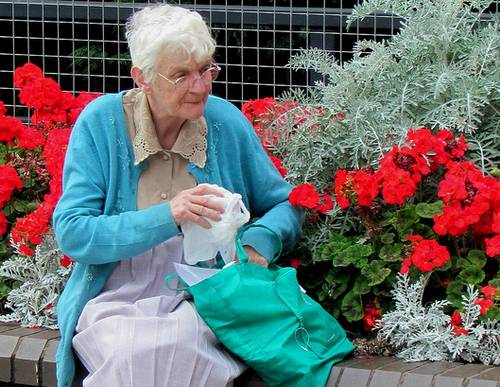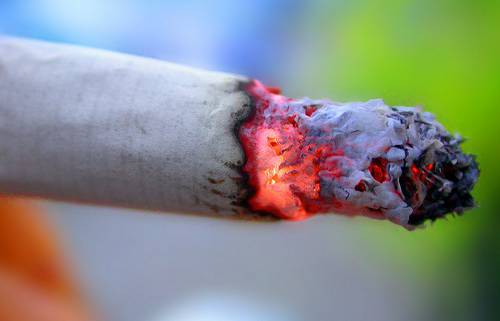Osteoporosis Risk Factors
A Look at the Risk Factors of Osteoporosis and Osteopenia
There are many known risk factors for osteoporosis, some of these are uncontrollable, such as age, sex, race, being post-menopausal, a small frame, previous fractures, and a family history of the condition.
Some osteoporosis risk factors are hard to avoid, such as bone loss that occurs through disease (e.g. autoimmune disorders) or by the use of a necessary medication (e.g. long-term corticosteroid use).
Other factors are controllable, and it is these that people wishing to have strong bones should concentrate their efforts on. Examples of controllable risk factors include diet, exercise, smoking, alcohol, and weight.
Who is at the Highest Risk of Osteoporosis?
People who have suffered a previous fracture are considered to be in the highest risk of osteoporosis group. This is because there is a high chance of repeat fractures.
The next major risk group is comprised of women aged over 60, who have a family history of the condition.
Although there are numerous osteoporosis risk assessment tools available, at the present time most of these are not of high quality, with an accuracy rate of ~70–75%.
Breakdown of the Various Risk Factors for Osteoporosis
Previous fracture
A bone breakage that is a result of falling from a standing height (or less) is known as a fragility fracture.
Each year approximately 1.7 million fragility fractures occur in the USA and 2.5 million in Europe; 300,000 of which occur in the UK.
People who have suffered from one of these have an increased risk of a further fracture. This increase in risk is independent of bone mineral density (BMD), but as you are more susceptible to fragility fractures if you have thinning bones, it is one of the tell-tale signs and symptoms of osteoporosis.
The incidence of a further fracture following a fragility fracture is quite high, with close to 20% of women who suffer a vertebral fracture at risk of another within one year. In people over 65, who have had a previous vertebral fracture there is a 6.7% chance of femur fracture, and a 13.3% risk of a hip fracture over a five year period.
Uncontrollable Risk Factors for Osteoporosis
Sex
As women usually have smaller skeletons than men do, they are at a much higher risk of developing osteoporosis. Additionally, hormonal changes in women following the menopause are also associated with increased bone loss. Although bone loss occurs in both men and women, it does so at a higher rate in women.
The Framingham osteoporosis study was carried out over a four-year period in elderly people with an average age of 75. It revealed that the yearly mean percentage loss of BMD in women was 0.87% in the femoral neck; 0.86% in the trochanter; 1.06% in the Ward’s area; 1.21% in the radial shaft; 1.12% in the lumbar spine; and 1.06% in the ultradistal radius. In men the figures were 0.38% (femoral neck); 0.04% (trochanter); 0.16% (Ward’s area); 0.90% (radial shaft): 0.09% (lumbar spine); and 0.77% (ultradistal radius).
From the above results, it is easy to see that there is a large difference in the percentage of BMD loss in women and men. This is especially the case in bone loss occurring at the femoral neck, trochanter, Ward’s area, and the lumbar spine. Men tended to have the largest amount of bone loss in the radial shaft and ultradistal radius.
Age
As a person ages the bone remodeling system becomes less effective at adding material at the same rate that it removes it. This leads to an overall loss in BMD. There are many factors affecting the efficiency of the bone remodeling cycle, but perhaps one of the most important are a decrease in estrogen levels in women and testosterone levels in men.

In the USA, there is a definite increase in the frequency of osteoporosis in postmenopausal white women as they age. The prevalence of osteoporosis increased from 27% in women between the ages of 50–59, through to 32% in ages 60–69, and 41% in those over 70. A separate study had a range from ~15% in the 50–59 age group, raising to 70% in those over 80.
Race
Osteoporosis is more prevalent in Caucasian and Asian people than African-American women. This is largely due to body frame size and an associated lower decrease in yearly BMD percentage. Anastasia et al. reported that white women were 2.5 times more likely to get osteoporosis than non-Hispanic black women.
Family History – Genetics
If a member of your family over the age of 50 has previously been diagnosed with osteoporosis, kyphosis, or low trauma fracture then there is an increased risk for osteoporosis in other family members.
Menopause
There is a strong link between the time of the menopause and bone mineral density. The earlier that the menopause occurs the greater the rate of bone loss that occurs. At the time of the menopause there is a dramatic increase in rate of BMD loss to around 1.5–2%.
Controllable Osteoporosis Risk Factors
Diet
One of the biggest factors that affect BMD is diet.
In this day and age, people drink more soda and less healthy drinks. This is especially a problem with teenagers and twenty-something’s, who would much rather have a can of soda, than a nutritionally rich glass of milk or a fruit smoothie. Unfortunately, the love of soda develops at a time when bone formation is at its peak. Cola is especially a problem as this drink contains phosphorous; this can compete with calcium in the bone. Away from soda, there is prevalence in our society to favour nutritiously poor junk foods over healthy foods.
Many known nutrients play a major role in bone health. Including these in your diet can have a significant impact on the risk of developing osteoporosis. Nutrients that should be included in a diet for osteoporosis include calcium, magnesium, vitamins D & K, manganese, zinc, and copper.
Exercise
There is a strong link between living a sedentary lifestyle and being prone to osteoporosis. Exercise is particularly important during adolescence, with those that partake in exercise at this age having stronger bones when they are older than those who do not.
Additionally, taking regular exercise is a good osteoporosis preventative measure for all, and weight bearing exercises can lead to increased bone and muscle strength in postmenopausal women.
Weight
People with a below average body mass index are at a higher risk of bone loss than others. Heavier people have the advantage that they naturally subject their skeleton to beneficial stresses when partaking in daily activities such as walking. However, changes in hormone levels observed in obese people can have a negative impact on BMD. Furthermore, there are many other health risks associated with being overweight.
Alcohol
The consumption of excess alcohol is thought to have a negative impact on bone health. However, present research on the matter is fairly inconsistent.
Smoking
BMD in people who smoke is 2% lower for every decade after the menopause. At the age of 80, the BMD of smokers is approximately 6% less than that of non-smokers.
Further to this, there is a significant increase in the risk of hip fracture in smokers.

Summary
There are many risk factors that are associated with osteoporosis. Some of these, such as age, race, and sex, are out of your control, but others, especially diet, smoking and exercises are controllable. There is a lot of evidence suggesting that leading a healthy lifestyle can lower your risk of osteoporosis.
TL:DR
- There are many risk factors for osteoporosis.
- Once a fragility fracture has occurred, there is a much higher chance of having a second breakage.
- Women are more at risk of osteoporosis than men are.
- The prevalence of osteoporosis in postmenopausal women increased as they aged from 27% at the ages of 50–59 to 41% when aged over 70.
- Caucasian women are more vulnerable to osteoporosis than African-Americans are.
- Osteoporosis in other family members is a risk factor.
- Bone loss increases at the time of the menopause.
- Including nutrients such as magnesium, calcium, and vitamin K and D can lower the osteoporosis risk.
- Weight bearing exercises strengthen bones.
- People who have a low BMI are more vulnerable to bone loss.
- Smoking is linked to decreased bone strength and increased hip fracture risk.
- Alcohol is a risk factor for osteoporosis.